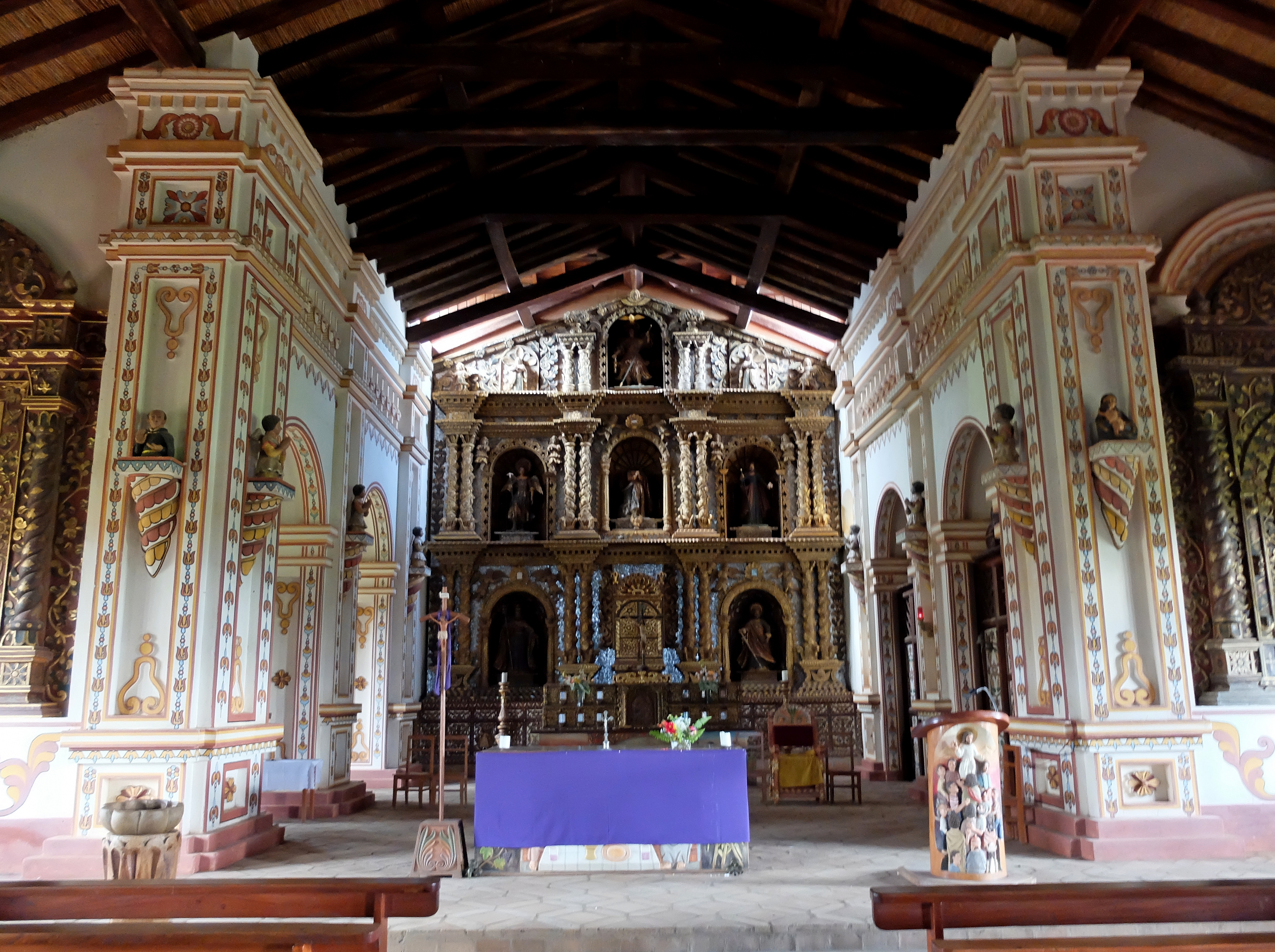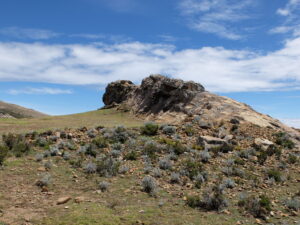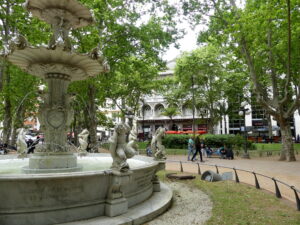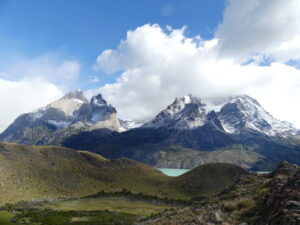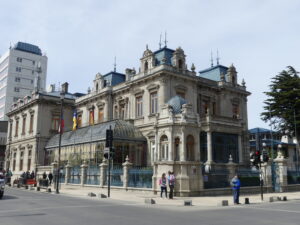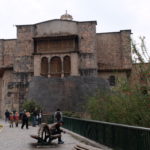
Religious orders like the Dominicans and Franciscans arrived soon after Spanish soldiers spread across western South America in the early 1500s. They came to convert the indigenous from their heathen religion to Christianity and serve the interests of the King of Spain. Building churches and missions on European models, they supplanted the magnificent local sacred sites and temples, often dismantling and reusing the stonework of those buildings. The churches provided the increasing Spanish population with places to worship, and centers to indoctrinate the native people in their new religion.
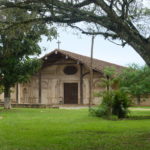
Some 150 years after the Spaniards subdued the Incas, at the end of the 17th century, the religious order known as the Jesuits, or more formally the Society of Jesus, began its work in the lowland areas of modern-day Bolivia and Paraguay. The Jesuits were a highly educated, disciplined and rigorously trained order, unlike the more haphazardly prepared orders of priests before them. They relished work under the harshest conditions.
All of these qualities befit their origins as almost literally soldiers of God. Their founder, St. Ignatius of Loyola, had been a Spanish nobleman and military captain – Inigo Lopez de Loyola. He experienced a religious conversion after being wounded in battle, and then began the order in 1534 with a cadre of dedicated apostles – just as his fellow soldiers were defeating the Incas. He applied military discipline to his spirituality and composed rigorous Spiritual Exercises for his followers. These influenced many aristocrats and artists as well as priests, including such people as the English poet John Donne. As the Jesuits expanded their work and influence, once they were sanctioned by the Pope six years later, they became known as the Society of Jesus (SJ), God’s Soldiers or La Compania, the Company of soldiers. They fostered education and classical learning along with religious teaching.
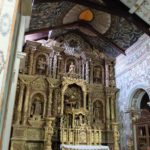
By the time the Company Men arrived in South America in 1568, the order and its missionaries were already very experienced in spreading the Catholic religion around the globe, having reached India and China as well as North America.
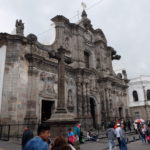
In well-established cities like Quito, Lima, La Paz and the silver mining center of Potosi, they conducted their work from residential and educational missions attached to profusely decorated baroque churches, with names that begin with La Compania. These are impressive buildings still. The exteriors typically feature elaborately carved stonework by local artisans, often with references to the traditional cultures and local flora, as well as more traditional ornamentation. Above the entry, their “logo” of IHS – for the Society of Jesus – declares who built the church. The interiors display a surfeit of gilt painted carved wood altars, chapels and decorative trim. Few other period churches match the exuberance of these.
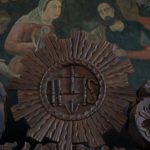
As they spread to various parts of this new world, the Company men were also quite different in their approach, attitudes and purposes with the tribal people.
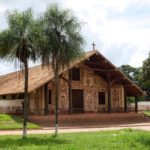
By the late 17th century, they had entered the South America lowlands, in Paraguay and, east of Santa Cruz de la Sierra, the southern part of Bolivia known as Chiquitos, home to the Chiquitanos. This name meant little people in Spanish because the natives had very small home entrances.
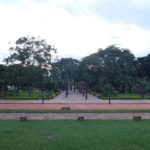
Here the Jesuits systematically recreated village life by developing idealized towns, or reducciones, organized like military encampments, each about 20 kilometers apart. Each site was carefully selected for fertile and accessibility of water (they even built dams to make lakes).
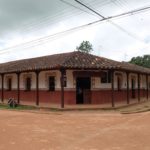
Long adobe residential buildings, communal dwellings that fit the familial lifestyle of the native people, were methodically arrayed in a rectilinear pattern of streets. The central streets formed a virtual crucifix, with the village church, monastery residence and plaza mayor at the head of these streets.
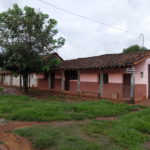
Quadrants of the village each had their own central crossroads marked by a two-meter high cross. In these villages today, still patterned as the Jesuits established them, you can see their system in the streets as well as some of the original buildings.
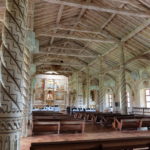
To build churches large enough for some several thousand residents of the villages, the priests again hired local wood craftsmen and artisans. The surviving churches differ somewhat from each other, but overall were very different in style from those stony monuments in urban centers, more a blend of Europe and native style in adobe and wood.

The interiors still demanded profusely decorated wood altars, chapels and even confessionals. To literally frame the carved altars, dazzling even today with gold leaf and paint, the Jesuits designed the apse as a kind of theatre proscenium. The cream-colored woodwork there was much less ornate, but still rich in myriad geometric designs painted on panels and columns.
The rest of the church sets the stage for all this dramatic adornment. Worshippers approach and pray along an extended nave. In some of the churches, the walls are decorated like the apse.
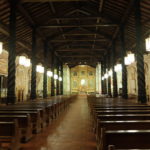
Others are much plainer, glowing instead with dark woods. Huge Solomonic columns, corkscrew in design, support dark cross-timbered woods above and define a wide center section and two aisles.
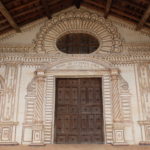
The entrances to the church also vary somewhat from place to place, as the six extant examples that we visited demonstrate. Each has a low angled wood roof, jutting over the façade and supported by large load-bearing columns.
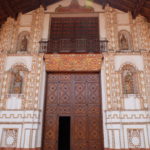
The façades facing the plaza differ a bit from church to church but are generally painted in geometric designs and viney patterns, with cherubs and other figures appropriate to the dedication of the church, like Mary, St. Michael or Raphael. The designs are often trompe-l’oeil, looking like reliefs carved into the stucco exterior of the brick construction.
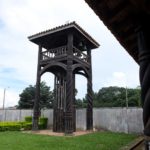
A bit to the side stands a sizable bell tower, usually a multi-story wood frame or stone structure, from the top of which the ringing bell for mass or other purposes sounded over the flat land of the entire town.

Behind and offset from the church, high walls defined open spaces and gardens around which were the long corridors, buildings and arcaded hallways typical of a monastery. There the priests lived, gathered and studied.
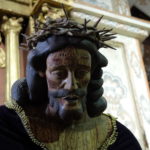
Unlike most other orders, Jesuits honored local customs and aimed to educate local people. Across the Americas, they cared to create dictionaries of the local languages so they could communicate better and deliver the word of God in local languages. They recognized the skilled workmanship of the natives, whose craftmanship they deployed to fashion the churches.
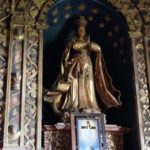
And they recognized the musical foundations of the indigenous cultures. For the Jesuits, art was a manifestation of God and a pathway to spiritual faith. In the Chiquitano missions alone – notably under the guidance of Swiss priest Martin Schmid, who also designed three of the finest missions – they fostered extensive music making and composition of sacred music.
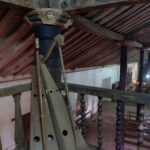
The local craftsmen produced musical instruments like violins and harps, as well as wood organs, one of which we saw finely restored and still working in Santa Ana de Velasco church.

During restoration work of the 1970s, a huge collection of this music was found, initiating a biennial music festival of Chiquitano music, in effect renaissance and baroque colonial Spanish compositions.
For a hundred years, the Company built dozens and dozens of mission churches and towns like these in Paraguay and Bolivia, and spread like an empire of their own throughout the rest of Spanish and Portuguese South America. They also grew in wealth and power, with more than 20,000 villagers in the Chiquitano reducciones alone.
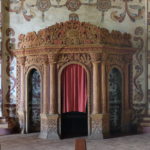
The Jesuit priests’ empathy and involvement with the native people they ministered to led them to work alongside the native tribesmen in planting and harvesting food for trade. More bravely, they tried to protect them from enslavement or forced labor requirements in the Spanish silver and gold mines, and also assisted the African people brought in slave galleys to South America.

Necessarily the Company men ran afoul of the exploitative Spanish colonialists and the Spanish crown. When the Paraguayan natives rebelled against Portuguese rule, the Jesuits were thought to support them. Portugal ejected the missionaries in 1759. The Spanish king kicked them out of the new Spanish world in 1767, not even hundred years after they arrived in Chiquitos and 200 years after arriving in South America.

Even the Pope turned against them for a while, though they were fierce defenders of the papacy in the counterreformation. The Jesuits were just too critical of many practices of the Catholic church and perhaps a bit too powerful for comfort. Though the Jesuit order returned to good standing afterwards, what they created in the villages of South America was soon pillaged or destroyed, including most of the mission churches.
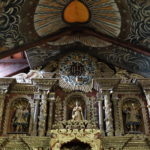
In their place, Spanish priests of other orders took over what survived, with mixed results. Over time, most of the reducciones and missions crumbled into ruins, or were altered completely for other use. But the eleven in Chiquitos somehow survived, out of which six have been declared World Heritage sites.
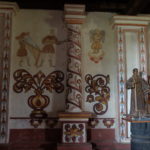
These villages define a Mission Route that visitors like us can follow around the Chiquitano region. But even these would perhaps be of little visitor interest today if not for the preservation and restoration work by dedicated individuals, particularly Swiss architect (and former Jesuit) Hans Roth.
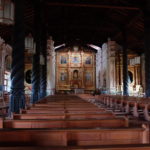
Roth is justly honored in the Chiquitano region. With scholarship, dedication, care, and plenty of cigarettes (according to the photos of him at work), he ensured that the splendid churches of the Jesuit missions live today. He largely deployed craftsmen of the same tribes that created the churches originally, replicating the methods used by Schmid hundreds of years earlier. In over 27 years of effort here at the end of the 20th century, Roth meticulously supervised the magnificent restorations we view today. Somehow he also found time and energy to construct a host of his own contemporary sanctuaries and chapels in the region.

The “Roth” mission churches are just part of what we could still see on the Mission route. The adjacent central plazas of the six towns still are lively village centers, even if they have been decked out with greenery and statuary for contemporary enjoyment. The long rectilinear buildings around the plaza are more colonial than Jesuit but give a good feel for what the center looked like hundreds of years ago. The still rectilinear layout of the villages even includes some original construction from back then. At some of the quadrant intersections, we could still circle a standing cross as we drove along. And the descendants of the builders of these missions still live, work, study and pray – as proud and free Chiquitanos – in the reducciones created by the Jesuits.
(Also, for more pictures from Bolivia, CLICK HERE to view the slideshow at the end of the itinerary page.)


